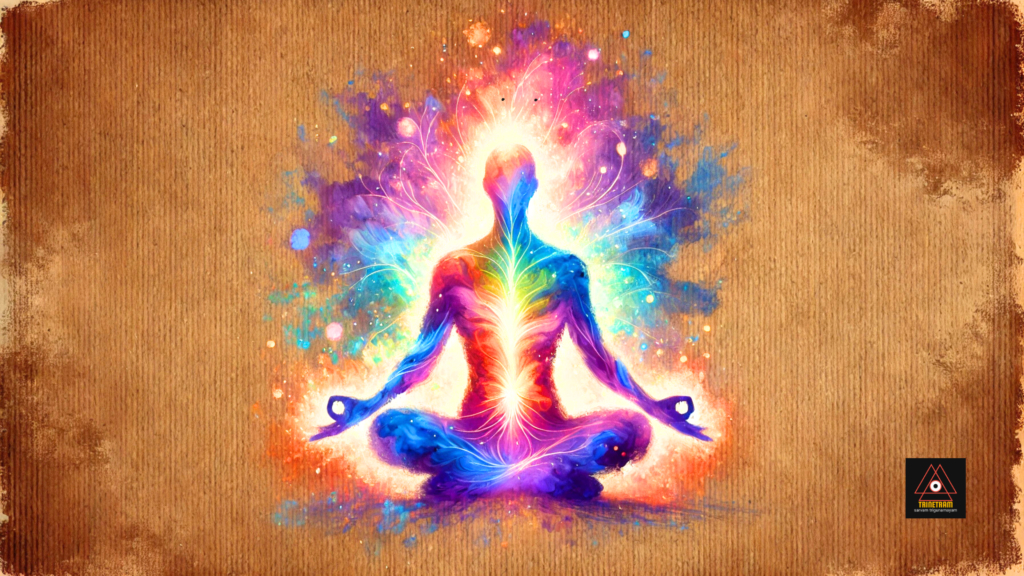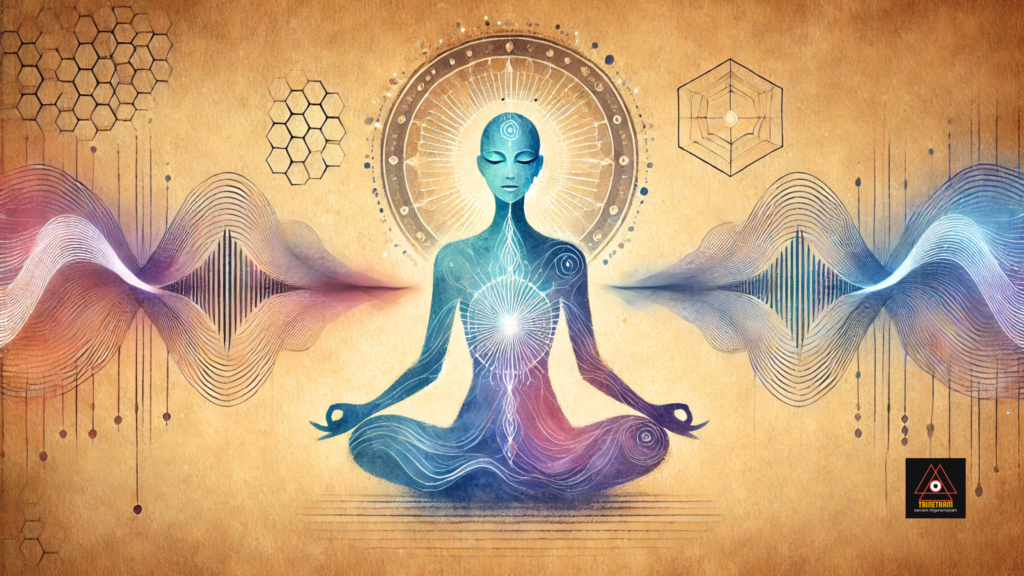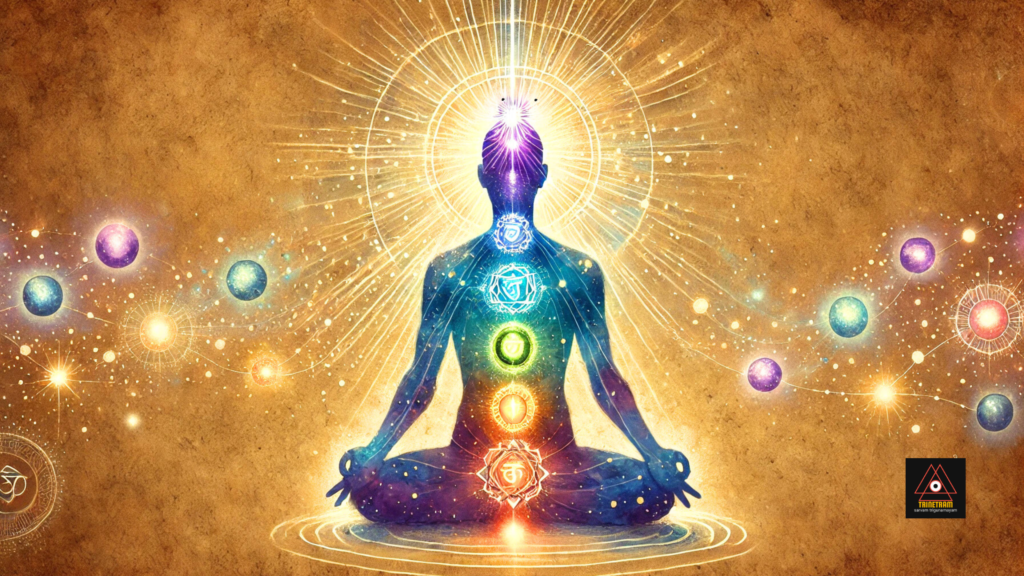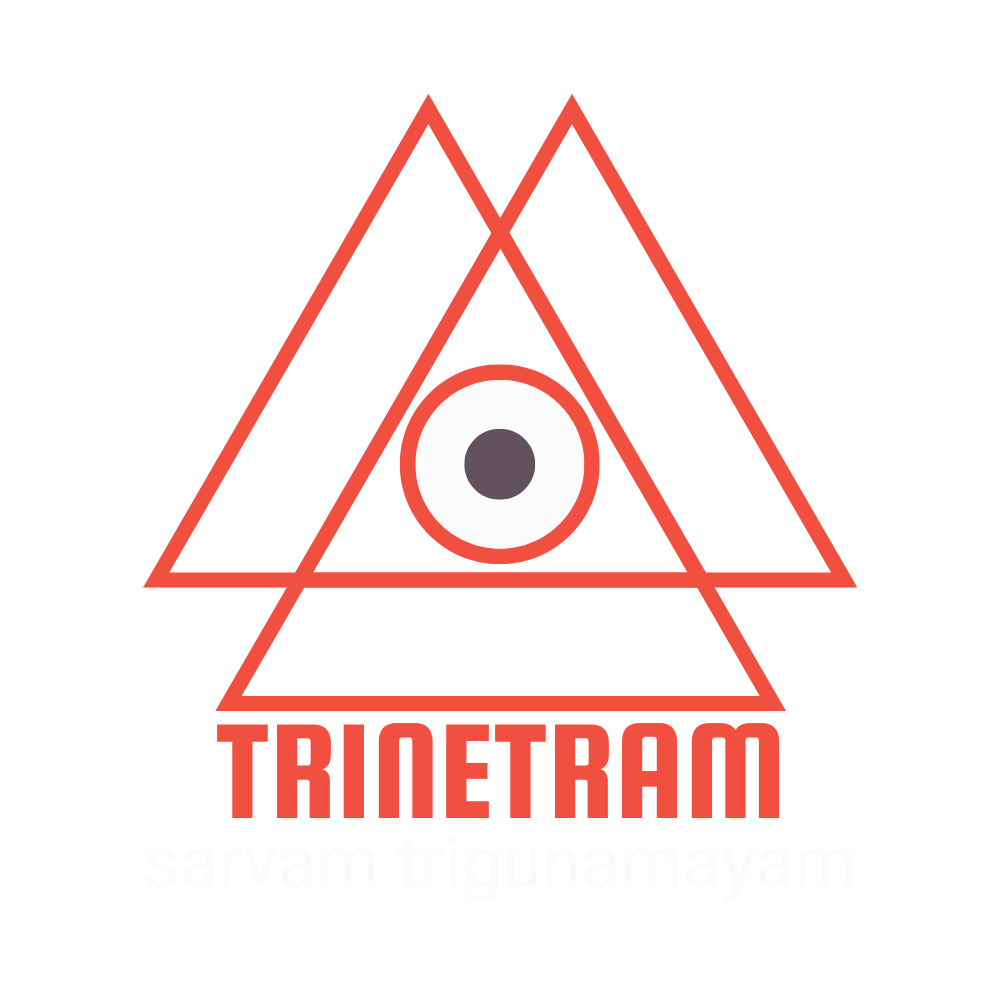Welcome to Trinetram.

Dhyana (Meditation): A Tool to Connect with Higher Dimensions

Meditation is not merely a practice for relaxation; it is a profound tool for self-discovery, who you truly are, and connecting with higher dimensions of consciousness. Rooted in ancient scriptures, meditation has been revered as a pathway to transcend the physical realm and align with your pure soul and divine essence of the universe.
Origin of Meditation in Ancient Scriptures
Meditation, or “Dhyana,” finds its origins in the Vedas and Upanishads, where it is described as a means to connect with the inner self and ultimate reality.
As cited in Bhagavad Gita (Chapter 6, Verse 15) “ध्यानयोगेन संयुक्तो मद्भावमधिगच्छति।” (Dhyānayogena Saṁyukto Madbhāvamadhigacchati) means, “Through meditation, one attains a state of divine consciousness.”
In the Patanjali Yoga Sutras, Dhyana is described as the seventh limb of Ashtanga Yoga, guiding practitioners toward Samadhi (absorption with the infinite).
“तत्र प्रत्ययैकतानता ध्यानम्।” (Tatra Pratyayaikatānatā Dhyānam) means, “Meditation is the uninterrupted flow of the mind toward a single focus.”
How to Practice Meditation Correctly

Meditation requires discipline, dedication and pure determination to unlock its full potential. Follow these steps for effective practice:
- Choose a Quiet Space: Find a serene location where you can meditate without distractions.
- Sit Comfortably: Sit in a cross-legged position (sukhasana/padmasana/siddhasana etc) or on a chair with your back straight. Keep your hands resting on your knees or in a dhyana mudra.
- Focus on Your Breath: Observe your natural breathing pattern (inspiration and expiration). Avoid altering it and let it flow effortlessly.
- Use a Mantra or Visual Aid: Chant a mantra like “Om” or Soham (So during inspiration and Ham during expiration) or visualize a calming image, such as a flame or lotus, to center your thoughts.
- Be Patient: Allow thoughts to come and go without clinging to them. Focus gently on your breath or mantra or on a yantra like sri yantra in a frame.
As cited in Bhagavad Gita, (Chapter 6, Verse 13) “समं कायशिरोग्रीवं धारयन्नचलं स्थिरः।” (Samaṁ Kāyaśirogrīvaṁ Dhārayannacalaṁ Sthiraḥ |) Means, “Keep the body, head, and neck straight, motionless, and firm.”
How Much Time to Spend Daily
For beginners, 10-15 minutes of meditation daily is sufficient. Gradually increase the duration as your practice deepens. Advanced practitioners often meditate for 30-60 minutes or more; there is no limit. The key is consistency rather than duration.
As cited in Katha Upanishad, (Chapter 2, Section 2, Verse 15) “न तत्र सूर्यो भाति न चन्द्रतारकं नेमा विद्युतो भान्ति कुतोऽयमग्निः।” (Na Tatra Sūryo Bhāti Na Candratārakaṁ Nemā Vidyuto Bhānti Kuto’yam Agniḥ) Means, “The Self shines there, where neither sun, moon, nor stars illumine, nor do lightning or fire.”)
How Meditation Affects Human Life

Meditation profoundly influences physical, mental, and spiritual well-being:
- Physical Benefits: Reduces stress, lowers blood pressure, and enhances immunity.
- Mental Benefits: Improves focus, memory, and emotional stability.
- Spiritual Growth: Cultivates inner peace and connects to your inner self.
Meditation transforms not just the practitioner but also their surroundings, as calmness and radiate positive vibrations.
As cited in Vishnu Sahasranama, (Verse 22) “शान्ताकारं भुजगशयनं पद्मनाभं सुरेशम्।” (Śāntākāraṁ Bhujagaśayanaṁ Padmanābhaṁ Sureśam) Means, “Meditation brings peace like Vishnu, reclining serenely on the serpent.”)
Connecting with Higher Dimensions

Meditation serves as a bridge to higher dimensions by quieting the ego and accessing subtler planes of existence. Here’s how:
- Still the Mind: A quiet mind becomes a receptor for universal energy.
- Elevate Vibrations: Chant mantras and focus on shat chakras to raise your vibrational frequency.
- Seek Guidance: Visualize light or divine beings, seeking wisdom from higher realms.
- Maintain Purity: Practice kindness, humility, and gratitude in daily life to attune to higher frequencies.
As cited in Bhagavad Gita, (Chapter 6, Verse 13) “यथा दीपो निवातस्थो नेङ्गते सोपमा स्मृता।” (Yathā Dīpo Nivātastho Neṅgate Sopamā Smṛtā) Means, “As a lamp placed in a windless place does not flicker, so is the mind in meditation.”
Frequencies to Listen During Meditation

Listening to specific frequencies during meditation can enhance focus and deepen the experience. These frequencies, known as Solfeggio frequencies, are believed to align the mind and body with universal vibrations. Here are some beneficial frequencies to incorporate:
- 396 Hz: Promotes liberation from fear and guilt.
- 417 Hz: Encourages change and removes negativity.
- 528 Hz: Known as the “Love Frequency,” it helps in healing and DNA repair.
- 639 Hz: Improves relationships and fosters connection.
- 741 Hz: Detoxifies the body and mind, enhancing clarity.
- 852 Hz: Awakens intuition and aligns spiritual energy.
To use these frequencies, play them softly in the background during meditation. Combine them with deep breathing and visualization for maximum effect.
Conclusion

Meditation is a timeless practice that bridges the material and spiritual realms, offering profound insights and inner peace. By embracing meditation, one goes aboard on a journey to self-realization and connection with the inner divine.
As cited in Bhagavad Gita, (Chapter 2, Verse 48) “योगस्थः कुरु कर्माणि संगं त्यक्त्वा धनंजय।” (Yogasthaḥ Kuru Karmāṇi Saṅgaṁ Tyaktvā Dhanañjaya) Means, “Perform your actions, being steadfast in yoga, abandoning attachment.”
We will explore Seven Chakras: Milestones on the Pathway to Nirvana in our upcoming blogs. Until then, stay tuned to trinetramyc.com! 🌈
We would love to hear your valuable thoughts and insights to help us deepen this exploration.
Thank you,Team Trinetram 🙏

Leave a Reply